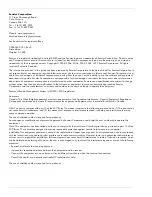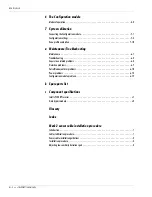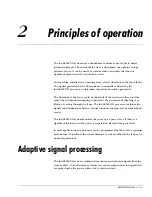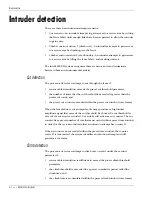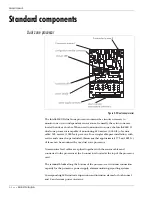
System supervision
Intelli-FLEX II product guide • • • 2 - 3
When an intruder attempts to climb over the fence, the action of feet and hands
pulling on and impacting the fence fabric, as well as strain in the fence fabric, will
cause a large number of energy pulses to rapidly occur. Pulling up on the fabric to
crawl under the fence creates a similar scenario. This type of contact with the
fence fabric will cause the preset climb threshold to be exceeded.
The initial contact will activate a climb time counter. The climb time counter
accumulates energy caused by climbing action. A preset number of climb contacts
must occur within a preset climb window time in order for the system to indicate
that an intrusion attempt has occurred.
If the climb activity count is not exceeded within the preset climb window the
climb counter resets. If the number is exceeded, the system identifies the activity
as an intrusion attempt and will generate a climb alarm.
System supervision
The Intelli-FLEX II system monitors itself to ensure that its protection capability is
not compromised. If that capability has been compromised, the system will
generate a supervision alarm. Supervision alarms can occur for several reasons:
•
a sensor cable line supervision current fluctuation, which may indicate:
•
sensor cable damage,
•
a defective splice, or
•
a defective terminator
•
power failure, or low DC power
•
processor enclosure door open
Unlike the intrusion alarm, which resets after detection, the supervision alarm
remains on until the problem is corrected.
Sensor cable line supervision current fluctuation
A terminator device is installed at the end of the sensor cable, to permit a small
DC supervision current throughout the entire length of the sensor cable. If the
current exceeds the defined limits, a supervision alarm will occur for that zone.


